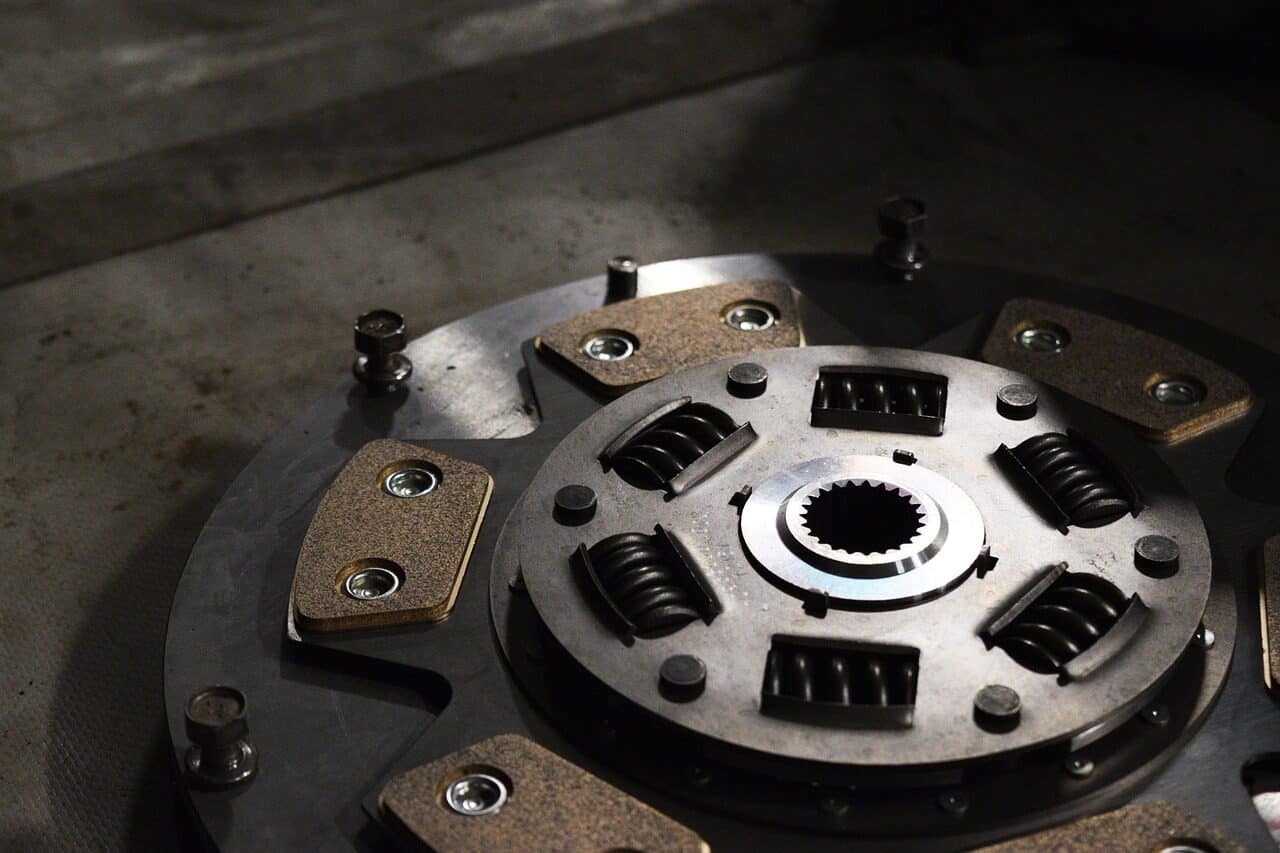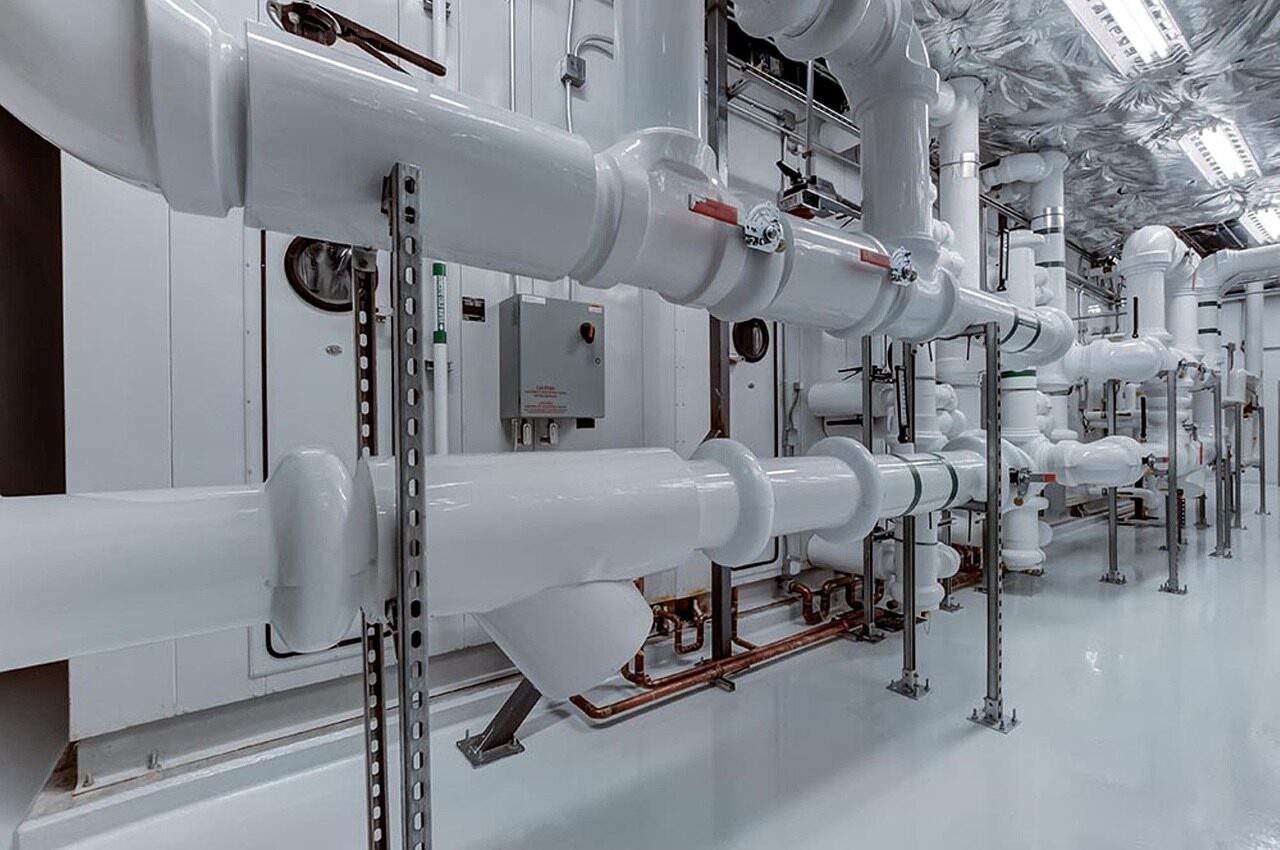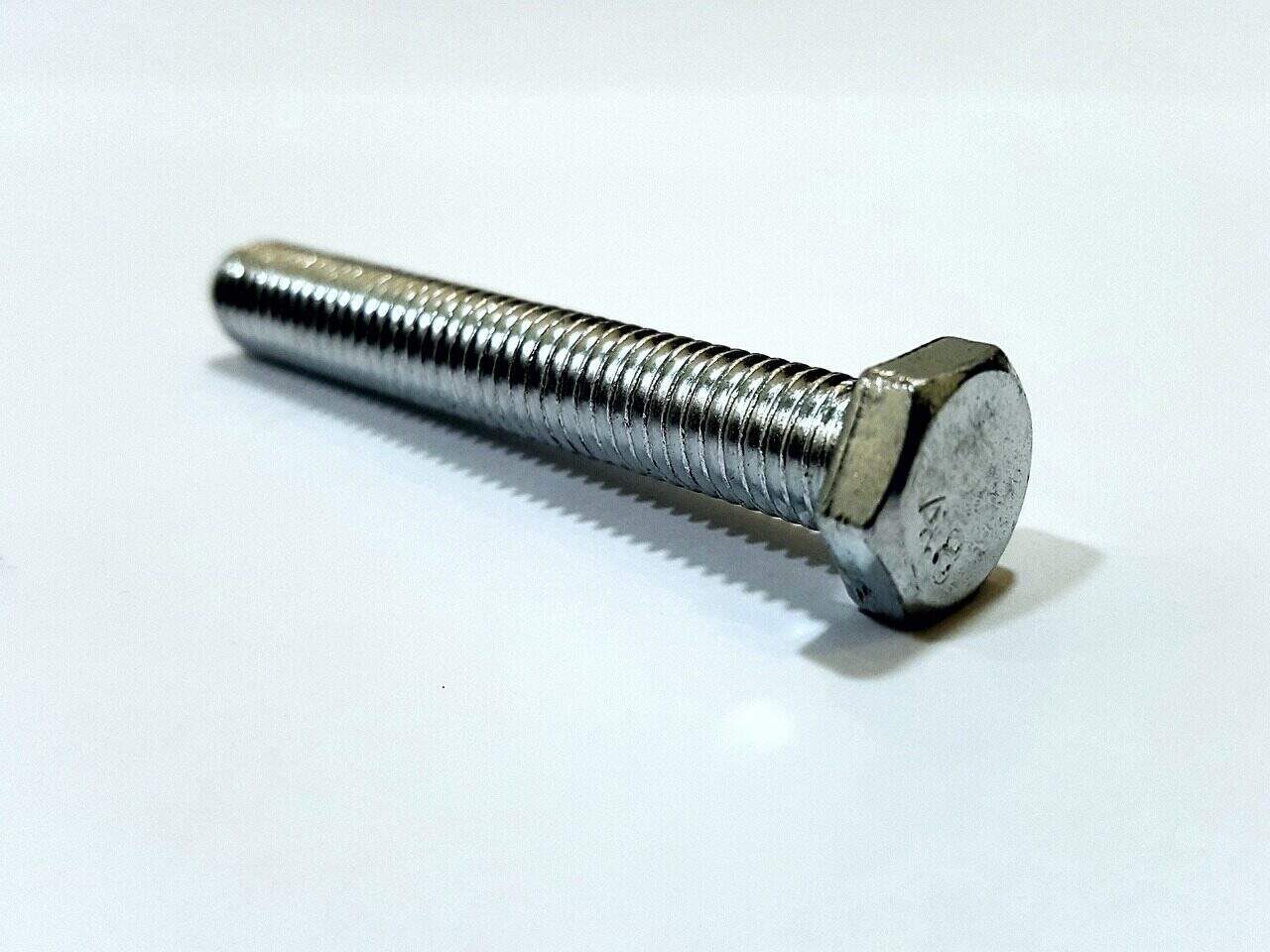How Bolts Work: A Complete Guide to Proper Installation
Introduction: Why Getting the Right Tension Matters
Most bolted connections don’t fail because the bolt isn’t strong enough. They fail because the bolt wasn’t installed correctly. Tightening a bolt might seem simple, but it’s actually a complex engineering process. The goal isn’t just to make a bolt “tight” – it’s to create the exact right amount of tension.
When you tighten a bolt, you create tension inside it. This tension works like a powerful internal spring that squeezes the parts together. Picture stretching a very stiff spring between two metal plates – the force from that stretched spring is what holds the plates together with tremendous pressure. This squeezing force is what allows a joint to resist outside forces, prevent parts from separating, and fight against loosening from vibration. Without enough tension, a joint is basically useless, no matter how big or strong the bolt is.
Understanding and controlling this tension is the key to properly installing bolts. This guide will break down the science behind achieving it, explore how torque relates to tension, look at different tightening methods, and provide a framework for checking your work afterward. Mastering these principles is essential for ensuring joints stay together and structures remain safe.

Before You Start: Planning for Success
A successful installation is decided long before you pick up a wrench. The foundation of a secure bolted joint lies in careful planning and preparation. This phase involves checking components, materials, and surface conditions to make sure you can achieve what the design requires.
Choosing the Right Bolt, Nut, and Washer
Selecting fasteners is the first critical decision. A bolt’s material and strength class, such as those defined by ISO 898-1, determine what it can handle. For example, a Class 8.8 bolt has an ultimate tensile strength of 800 MPa and a yield strength of 640 MPa (800 × 0.8). This is different from a Class 10.9 bolt, which has higher yield and tensile strength. The target tension for an application is typically set to a high percentage (like 75-90%) of the bolt’s proof load to maximize clamping force without causing permanent damage. The nut’s strength class must match or exceed the bolt’s (like a Class 10 nut for a Class 10.9 bolt) to prevent thread stripping before the bolt reaches its required tension. Washers, specified by standards like ISO 7089, must be hardened to prevent damage and provide a consistent friction surface.
Joint Material and Shape
The materials being clamped significantly influence how the joint behaves. The stiffness of the joint members compared to the bolt’s stiffness determines how outside loads are distributed. A “stiff” joint, with thick, rigid parts, is generally better because it allows the bolt to absorb more of the dynamic outside tensile loads, protecting it from fatigue. The geometry, including hole size and how parallel the joint faces are, is also critical. Misaligned faces or oversized holes can introduce bending stresses in the bolt, leading to a dramatic reduction in its fatigue life and inaccurate tension readings.
Material Compatibility and Corrosion
When different metals touch in the presence of moisture, galvanic corrosion can occur. This electrochemical process causes one metal (the anode) to corrode while protecting the other (the cathode). Selecting incompatible materials for a bolted joint can lead to rapid deterioration of either the fastener or the structure itself. The Galvanic Series provides a guide for material selection, where metals further apart in the series have greater potential for corrosion when paired.
| Anodic (More Likely to Corrode) | Metall | Cathodic (Less Likely to Corrode) |
| Most Anodic | Magnesium | |
| Zinc | ||
| Aluminium | ||
| Cadmium | ||
| Kohlenstoffstahl / Iron | ||
| Lead | ||
| Tin | ||
| Brass | ||
| Copper | ||
| Rostfreier Stahl (Passive) | ||
| Titanium | ||
| Least Anodic | Graphite / Platinum / Gold |
Surface Condition and Lubrication
The condition of the surfaces – both under the nut/bolt head and on the threads – has the biggest impact on the outcome of a torque-controlled installation. Surface roughness, coatings (such as zinc, hot-dip galvanizing, or special finishes), and whether lubricant is present dramatically change the coefficient of friction. A clean, well-lubricated fastener will convert much more of the applied torque into useful tension compared to a dry, dirty, or rusted one. This variation in friction is the main reason why simply applying a “spec” torque value without controlling these conditions is unreliable.

The Core Principle: How Torque Creates Tension
Torque control is the most common method for Engineering Bolts Installation because it’s simple. However, it’s an indirect way to control tension, and its accuracy depends heavily on factors that are often poorly controlled. Understanding the physics of the torque-tension relationship reveals its inherent limitations.
The Torque-Tension Formula
The relationship is commonly expressed by the formula: T = KDP.
- T = Target Torque: The rotational force applied by the wrench.
- K = Nut Factor (or K-Factor): A coefficient that accounts for all friction and geometric variables.
- D = Nominal Bolt Diameter: The major diameter of the bolt.
- P = Target Tension: The desired tensile force (clamp load) in the bolt.
In theory, if K, D, and P are known, you can calculate the required torque T. However, the reliability of this entire equation depends on the value of K, which is far from constant.
Where Does the Torque Go?
A common misconception is that most of the applied torque works to stretch the bolt. In reality, torque is incredibly inefficient at generating tension. The energy from applied torque is consumed primarily by friction in two key areas. A typical energy distribution for a standard fastener is:
- About 50% of the torque is used overcoming friction between the turning nut (or Bolzenkopf) and the washer/joint surface.
- About 40% of the torque is used overcoming friction between the male and female threads.
- Only about 10% of the applied torque actually contributes to stretching the bolt and creating tension.
This 50/40/10 split highlights a critical point: 90% of the work done during installation is simply overcoming friction. A small change in friction can cause a massive change in the resulting tension for the same applied torque. If friction increases (due to rust or lack of lubrication), more energy is spent on friction, and the final tension will be dangerously low. Conversely, if friction decreases (due to unexpected or high-performance lubricant), the same torque will produce much higher tension, potentially damaging the bolt or joint.
The K-Factor: A Critical Variable
The K-Factor attempts to account for this friction. It’s not a true coefficient of friction but a value determined through testing. Its value is highly sensitive to many factors, including:
- Schmierung: The type, amount, and application method of lubricant.
- Surface Finish: The texture and roughness of thread and bearing surfaces.
- Coatings: Plating such as zinc or cadmium, or hot-dip galvanizing, which have unique friction properties.
- Material: The bolt, nut, and washer material combination.
- Installation Speed: Higher speeds from power tools can heat surfaces and change friction.
- Contamination: The presence of dirt, debris, or moisture.
Because of this extreme variability, using a “textbook” K-Factor for a critical application without verification is poor practice. As the table below shows, the range of K-Factors for even common conditions is wide. This uncertainty is why tension scatter in torque-controlled installations can be as high as ±35%, even with a perfectly calibrated torque wrench.
| Bolt/Nut Condition | Lubricant | Estimated K-Factor Range | Variability Note |
| Non-plated, black finish | As-received (light oil) | 0.18 – 0.25 | Highly variable depending on manufacturer and storage. |
| Verzinkt | As-received (no secondary lube) | 0.19 – 0.28 | Chromate treatment can affect friction. |
| Feuerverzinkt | As-received | 0.25 – 0.40 | Thick, rough coating requires lubrication (e.g., wax) to be controllable. |
| Cadmium Plated | As-received | 0.14 – 0.20 | Provides natural lubricity. |
| Steel, Moly-based paste | Molybdändisulfid-Paste | 0.11 – 0.17 | High-pressure lubricant designed to reduce friction and variability. |
| Steel, clean and dry | No lubricant | > 0.30 | Unpredictable; high risk of galling and insufficient tension. |
Advanced Installation Methods
For critical applications where the ±35% tension scatter of the torque method is unacceptable, more advanced and accurate methods must be used. These methods move away from relying on the unpredictable torque-friction relationship and instead measure bolt tension more directly.

Turn-of-Nut Method
The turn-of-nut method is a simple yet highly effective technique that controls bolt stretch rather than input torque. It’s widely specified by organizations like the Research Council on Structural Connections (RCSC) for structural steel construction.
- How it works: The process involves two stages. First, the joint is brought to a “snug-tight” condition, which is the point where all parts in the joint are in firm contact. This is typically achieved with a few impacts of an impact wrench or the force of a person using a standard wrench. From this snug-tight starting point, the nut is rotated a prescribed amount (like 1/2 turn, 2/3 turn) relative to the bolt. This forced rotation stretches the bolt beyond its elastic limit, ensuring high and reliable tension.
- Pros: Simple, requires no special tools, not significantly affected by friction, and provides a clear visual inspection criterion (rotation marks).
- Cons: Requires access to both sides of the joint to prevent the bolt from turning, and it intentionally takes the bolt past its yield point, meaning fasteners are generally not reusable.
- Best Applications: Structural steel connections (like buildings, bridges), applications with short, stiff bolts where stretch is predictable.
Direct Tension Indicators (DTIs)
DTIs are specialized washers that provide a direct visual or mechanical indication that the required tension has been achieved.
- How it works: Standard DTIs (per ASTM F959) have raised bumps on their surface. As the bolt is tightened, the clamping force flattens these bumps. An inspector uses a feeler gauge to check the gap between the DTI and the underside of the bolt head or nut. When the required gap is achieved, the correct tension has been reached. A more modern variant, Squirter® DTIs, contains bright orange silicone material in cavities under the bumps. When the bumps compress to the target load, the silicone is expelled, providing a clear, unmistakable visual signal.
- Pros: Provides direct verification of tension, not torque. Squirter types are extremely easy to inspect from a distance. They are independent of friction conditions.
- Cons: Adds cost per bolt location, and standard (non-squirting) DTIs require careful feeler gauge inspection, which can be time-consuming.
- Best Applications: Critical structural connections, bridge work, and any application requiring a simple, verifiable method for tension assurance where torque control is deemed insufficient.

Hydraulic Bolt Tensioning
Hydraulic tensioning is the gold standard for achieving highly accurate and uniform tension in critical bolted joints. It completely eliminates the influence of friction.
- How it works: A hydraulic tensioner is a ring-shaped jack that fits over the bolt and nut. It grips the threaded end of the bolt and pulls on it with precise, controlled hydraulic pressure. This stretches the bolt lengthwise, just like a tensile testing machine. While the bolt is held in this stretched state, the nut is run down against the joint face with minimal effort (typically by hand). The hydraulic pressure is then released, and the bolt’s elastic recovery creates the tension. The tension is directly proportional to the hydraulic pressure applied, which is monitored on a calibrated gauge.
- First-hand Experience: When using a hydraulic tensioner, you feel no rotational resistance as you run the nut down by hand. The process is quieter and more controlled than using a large impact wrench, and the pressure gauge gives a direct, repeatable measure of the force being applied to the bolt. Multiple tensioners can be linked together to tension several bolts simultaneously, ensuring even clamp load across a flange, which is critical for gasketed joints.
- Pros: Highest accuracy (typically within ±5%), eliminates thread and nut face friction, removes twisting stress from the bolt, and ideal for simultaneous tensioning of multiple bolts.
- Cons: Requires specialized, expensive equipment; requires extra bolt thread length to accommodate the tensioner puller bar; can be slower than other methods for a single bolt.
- Best Applications: Critical flanges on pressure vessels, heat exchangers, wind turbine foundations, large rotating machinery, and any application where tension accuracy and uniformity are paramount.
Comparative Analysis
Each method has its place. Torque control is suitable for non-critical applications. Turn-of-nut offers a robust, low-tech upgrade for structural work. DTIs provide simple visual proof. Hydraulic tensioning delivers the ultimate precision for applications where failure is not an option.
After Installation and Failure Analysis
A bolted joint is a dynamic system. Its behavior doesn’t end once the wrench is removed. Understanding long-term effects and being able to diagnose failures is a critical skill for any engineer or technician.
Immediate Checks and Relaxation
Immediately after tightening, a joint can experience short-term tension loss, also known as embedment. This is a small loss of bolt tension that occurs as the microscopic high points on the thread and joint surfaces flatten under the immense clamping pressure. This loss is typically small (2-10%) but can be significant in joints with many layers, soft materials, or rough surfaces. For critical gasketed joints, this effect is often counteracted by executing a specific tightening pattern (like a star pattern) and performing multiple passes to bring all bolts to the final target tension uniformly.
Understanding Vibrational Loosening
The primary enemy of a bolted joint in a dynamic environment is vibrational loosening. This occurs when sideways or cyclic loads cause microscopic slips at the joint interface. These small movements can overcome the static friction in the threads, allowing the nut to back off incrementally. The single most effective defense against vibrational loosening is sufficient tension. A high clamp load generates a large friction force at the joint interface, preventing any relative slip between the clamped members. If the clamp load is high enough to prevent this slip, the bolt itself is not subjected to the forces that cause loosening.
A Technical Guide to Bolt Failure
When a bolt does fail, it provides crucial evidence about the root cause. A visual analysis of the fracture surface and the bolt’s condition can distinguish between overload, fatigue, or improper installation.
| Fehlermodus | Visual Characteristics | Primary Cause |
| Tensile Overload | “Cup-and-cone” fracture surface in ductile bolts. Significant “necking” (stretching and reduction in diameter) near the fracture. | Gross overtightening during installation or an extreme external load that exceeded the bolt’s ultimate tensile strength. |
| Shear Failure | Clean, flat fracture surface, often polished or smeared from sliding motion. The fracture plane is perpendicular to the bolt’s axis. | A sideways load on the joint that exceeded the bolt’s shear strength. Often indicates the joint slipped because of insufficient clamp load. |
| Fatigue Failure | Fracture surface shows distinct “beachmarks” or “ratchet marks” indicating slow, progressive crack growth. A final, rougher zone shows where the remaining cross-section failed suddenly. | Cyclical or fluctuating loads combined with insufficient tension. Low tension allows the bolt to experience a large stress range with each load cycle, starting and growing a crack. |
| Torsional Shear | A smeared, twisted, or granular fracture surface, often occurring during installation. The bolt shank may show signs of twisting. | Excessive torque combined with high thread friction (like no lubricant, damaged threads). The input torque exceeded the bolt’s torsional strength before adequate tension was developed. |
Conclusion: A Controlled Science
The proper Engineering Bolts Installation is not an art form or a matter of feel; it is a controlled scientific process. Moving beyond the simplistic notion of “torque” and focusing on the true engineering objective—achieving correct tension—is the defining characteristic of a reliable and safe bolted joint.
The key principles are clear:
- The goal is achieving correct tension, not just a torque value.
- The K-Factor is the most significant source of uncertainty in torqued installations.
- Only a small fraction (around 10%) of applied torque generates useful tension.
- For critical joints, consider methods like turn-of-nut or hydraulic tensioning for greater accuracy.
- Sufficient tension is the best defense against vibrational loosening and fatigue failure.
By applying these principles—from pre-installation analysis to selecting an appropriate installation method and post-installation verification—we elevate the process from a simple mechanical task to a core engineering discipline. Treating Engineering Bolts Installation with this rigor is fundamental to safety, reliability, and excellence in every structure we build and machine we operate.
- Fastener Installation Standards – ASTM International https://www.astm.org/
- Bolt Installation and Torque – ISO https://www.iso.org/
- Structural Bolting – RCSC (Research Council on Structural Connections) https://www.boltcouncil.org/
- Bolted Joint Design – ASME https://www.asme.org/
- Bolt Tightening Methods – Wikipedia https://en.wikipedia.org/wiki/Bolted_joint
- Fastener Technology – SAE International https://www.sae.org/
- Industrial Fasteners Institute https://www.industrial-fasteners.org/
- Structural Steel Construction – AISC https://www.aisc.org/
- Bolt Installation Engineering – ScienceDirect https://www.sciencedirect.com/topics/engineering/bolt-tightening
- Manufacturing and Fastening – Thomasnet https://www.thomasnet.com/




